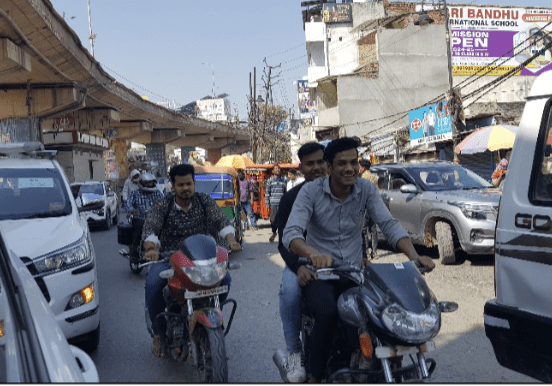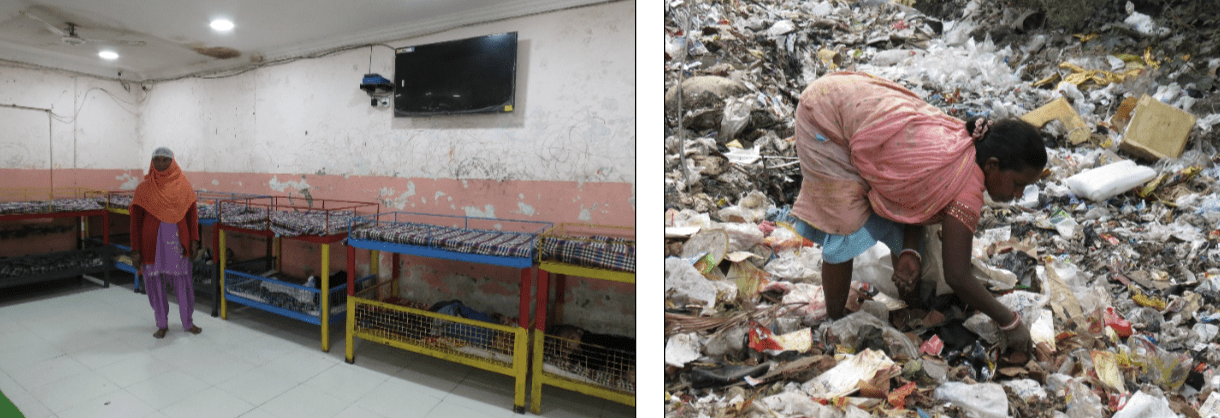Cross-Cultural Comparisons Between India and the U.S.
Curricular Unit designed by Designed by Prof. Iryna Babik, Department of Psychological Science, Boise State University
This curricular module could be used for high schoolers or undergraduate university students (e.g., courses like “The Art of Happiness”, “Cross-Cultural Psychology”, and “The Psychology of Health”). In this curricular unit, students will explore the effect of culture (cultural values and traditions) on the manifestation of mindfulness in everyday life. Students will explore whether some cultural values and traditions may facilitate the development of mindfulness more than others.
- Students study and discuss culture and mindfulness, their meaning and implications.
Culture encompasses the shared beliefs, values, norms, customs, practices, languages, symbols, and knowledge that a group of people hold in common, shaping their way of life and guiding how they interpret the world around them. It includes tangible aspects, such as art, music, cuisine, and clothing, as well as intangible aspects, like traditions, rituals, ethics, and social norms. Culture is transmitted from generation to generation, evolving over time in response to internal developments and external influences. It plays a crucial role in defining group identity, influencing individual behavior, and fostering a sense of belonging and community. Culture is not static; it adapts and changes as societies interact, merge, and face new challenges, reflecting the complex and dynamic nature of human societies.
Mindfulness refers to the practice of being fully present and engaged in the moment, aware of your thoughts, emotions, and sensations without judgment. It involves a conscious direction of our awareness away from habitual, wandering thoughts and towards the current experience. Mindfulness practices, often rooted in Buddhist meditation, encourage individuals to observe their thoughts and feelings as they are, without trying to change or judge them, fostering a greater sense of calm and self-awareness. This practice is believed to improve mental well-being by reducing stress, anxiety, and depressive symptoms, enhancing emotional regulation, and improving concentration and cognitive flexibility.
- Students are asked to create a list of at least five everyday life situations that might facilitate mindfulness in their everyday life in the U.S.
The following examples are possible:
- Commuting: Many people use their daily commute time to practice mindfulness by focusing on their breathing or observing their surroundings without judgment, whether they are driving, taking public transit, or walking.
- Meal Times: Mindfulness can be practiced during meals by paying close attention to the taste, texture, and aroma of the food, which can enhance the eating experience and promote better digestion.
- Work Breaks: Taking short breaks during work to practice mindfulness exercises, such as deep breathing or meditation, can help reduce stress and increase productivity.
- Nature Walks: Engaging in walks through parks or natural surroundings, noticing the sounds, sights, and smells of nature, which can be a powerful way to cultivate mindfulness.
- Physical Exercise: Activities like yoga or tai chi specifically incorporate mindfulness in their practices, but even routine gym sessions or jogging can be mindful if done with full attention to the body’s movements and sensations.
- Household Chores: Doing chores like washing dishes, cleaning, or gardening with full attention on the task at hand, rather than letting the mind wander, can turn mundane activities into mindfulness practices.
- Going-to-Bed Routine: Many people find it helpful to engage in mindfulness meditation or deep-breathing exercises right before bed to improve sleep quality.
- Everyday Conversations: Practicing mindfulness while listening to others can improve communication and relationships by ensuring you are truly present and engaged.
- Technology Use: Setting aside specific times to check emails or social media mindfully can help manage the overstimulation often associated with technology use.
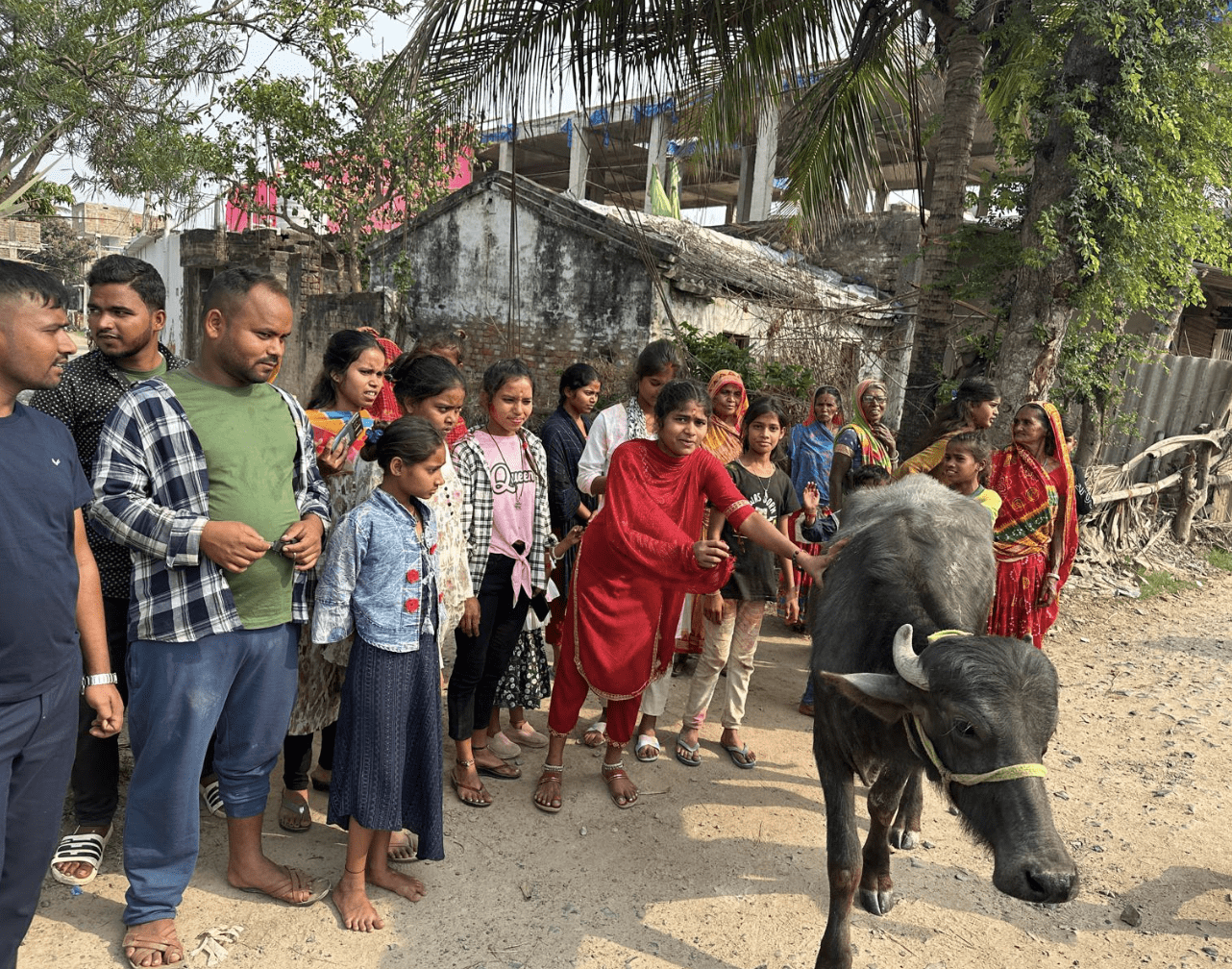 It is important to discuss with students that the above-mentioned are examples of situations in which mindfulness could be implemented, but by themselves, they do not facilitate the mindful state of the mind.
It is important to discuss with students that the above-mentioned are examples of situations in which mindfulness could be implemented, but by themselves, they do not facilitate the mindful state of the mind.
- Students are provided with descriptions of cultural values, traditions, and everyday life situations that might facilitate mindfulness in India (including photo illustrations).
In India, the following cultural values, traditions, and everyday life situations may promote mindfulness:
- Believing that nature is alive by praying to trees, the river Ganga, the ocean, or mountains. This attitude toward what are considered “inanimate” objects in Western understanding provides an alternative sense of reality and a deeper level of attention to everything around you.

- Despite rapid globalization and modernization, Indian society still bears the heavy legacy of the caste system and is very patriarchal and hierarchical in nature. People are aware of their caste and often treat others based on their own caste and that of their counterpart. The same applies to differences in status. For example, it would not be considered appropriate for a person of lower status (e.g., a student) to shake hands with someone of higher status (e.g., a professor). It requires a special level of awareness to remember the appropriate and inappropriate ways of interacting with others based on their caste and status.
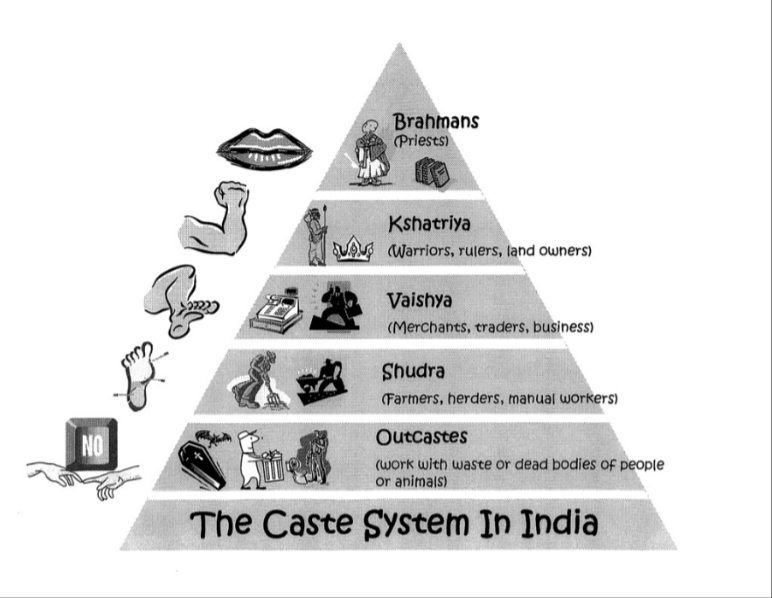
- Being extremely alert to the current situation while crossing the street, as traffic is often unregulated and, even when it is, many drivers and pedestrians do not obey the rules. For example, cars usually drive between the lines, regularly cross an intersection at a red light, turn right from the left lane, or drive on the opposite side of the road against traffic. This requires both drivers and pedestrians to pay more attention.
- At the entrances to Indian households or some institutions, you may encounter Rangoli. Rangoli is a traditional Indian art form where patterns are created on the floor using materials s
 uch as colored rice, dry flour, colored sand, or flower petals. It is typically made during Hindu festivals like Diwali, Pongal, Onam, and other significant celebrations to bring good luck and welcome deities into the home. Rangoli is not only a decorative element but also a way to express creativity and is thought to bring spiritual growth; the practice is passed down through generations, often becoming a communal activity during major festivities. Interestingly, people in India are
uch as colored rice, dry flour, colored sand, or flower petals. It is typically made during Hindu festivals like Diwali, Pongal, Onam, and other significant celebrations to bring good luck and welcome deities into the home. Rangoli is not only a decorative element but also a way to express creativity and is thought to bring spiritual growth; the practice is passed down through generations, often becoming a communal activity during major festivities. Interestingly, people in India are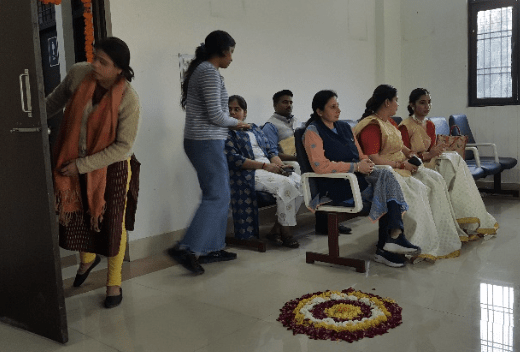 quite attuned to their surroundings, carefully walking around without stepping on the Rangoli and ruining the design.
quite attuned to their surroundings, carefully walking around without stepping on the Rangoli and ruining the design.
- There are important cultural traditions that require people to kneel and touch the ground when entering a temple or a performing stage. This practice heightens awareness of one’s surroundings and underscores the need to adhere to tradition.
- On average, Indians are more attuned to their surrounding environment and believe in adapting themselves rather than trying to change the environment. For example, when people in the US feel hot, they turn on the air conditioner, whereas in India, people might remove extra layers and go outside to find a breeze or shade under a tree.
- In India, people often feel less pressure to arrive somewhere on time. As a result, they can enjoy their time even while stuck in traffic. Instead of focusing on upcoming commitments, they relax and live in the moment: you can see people smiling and looking around with interest. While visiting a museum, you might ask your Indian host, “How much time do we have here?” and hear their response, “As much time as you need.” However, after an hour of unhurriedly enjoying the museum, you are ushered to another meeting. In the U.S., you would be told that you only have an hour, and you might spend that hour stressing about the limited time.
For additional information on time perception differences across different cultures (“clock time” in the West vs. “event time” in the East) check the following resources:
Levine, R.V. (2017). Time and culture. In R. Biswas-Diener & E. Diener (Eds), Noba textbook series: Psychology. DEF publishers.
Macduff, I. (2006). Your pace or mine? Culture, time, and negotiation. Negotiation Journal, 22(1), 31-45.
- In India, due to a general tendency not to take rules and laws a
s seriously as people do in the U.S., the average person has fewer expectations in life. These might include expectations that someone will arrive on time, specific items will be available in a store, a bus/train/plane will arrive or depart on schedule, an office or restaurant will open as scheduled, or that food in a restaurant will be served quickly. In general, having fewer expectations seems to allow people to live more in the moment, rather than viewing each situation through the lens of their own expectations.
- Indian people show their respect by taking off their shoes before entering a house, a store, a performing stage, or a temple. This practice requires attention to the situation and appropriate actions at appropriate times.
- By the way, walking barefoot makes you feel the ground and bec
 ome more aware of where you go and where you step, thus making you more grounded and aware of your surroundings.
ome more aware of where you go and where you step, thus making you more grounded and aware of your surroundings. - Indian people are typically mindful about reusing old things. While buying new items can be quite mindless, turning on your creativity to make use of what you already have requires attention to your surroundings.
- In India, many people are poor and possess very few things. With fewer possessions at home, people become more conscious when using the few items they have. Fewer resources require a more thoughtful approach, more attention to detail, and more planning.
- Manual labor is still very common in India. In contrast to automated labor, manual labor requires a person to be present and attentive to the task at hand.
- A lack of available resources makes people more mindful when using those limited resources. One thing is to mindlessly stand under a hot shower for 30 minutes enjoying music from Spotify on your new phone; a completely different thing is to heat a bucket of water, bring it outside, and wash your hair in the middle of the street in view of all your neighbors and passing strangers.

- Seeing animals slaughtered in the streets right before your eyes makes you mindful of your food choices.

- In India, you can often see pottery, silk, and other items being made in front of you. This visibility enhances your awareness of the connection between makers, sellers, and buyers, and makes you more attentive to the things you buy and use regularly.
- In India, up to 65% of people follow a vegetarian diet. Paying attention to what you eat and the contents of your food completely changes people’s eating experiences, making them more aware and more grateful.
- In India, people often eat using their hands, typically the right one (see below). This practice makes people more grounded, creating a moredirect contact with the food they consume. Using utensils creates a separation between people and the food they eat.

- In India, it is considered inappropriate to give or receive anything with the left hand. This tradition stems from hygiene practices common in the region. For example, people in many cultures, including India, use water instead of toilet paper to clean themselves after using the restroom, traditionally using the left hand for this purpose. Because of its association with unclean activities, the left hand is considered impure. Thus, it is customary to use only the right hand in transactions with other people, especially those involving food or gifts. Traditions like this bring more awareness to daily interactions.
- Mindfulness can be manifested through caring for others. Consider the story “Idgah” by the famous Indian writer Munshi Premchand. The narrative centers on a young orphaned boy, Hamid, who lives with his grandmother, Amina. They are very poor. During the festival of Eid, Hamid has only three paise to spend on toys and treats. However, at the fair, Hamid buys a pair of tongs because he remembers that Amina burns her fingers daily while cooking bread. In this act, Hamid foregoes his own childish desires in order to help his grandmother. Thus, day after day, Hamid paid attention to his grandmother’s needs and then purchased a tool that would improve her life.
- Taking care of senior family members is a very important cultural tradition in India. Very often, multiple generations live under the same roof, with children and grandchildren helping older family members. This arrangement heightens people’s awareness of the needs of others.
- Similarly, in India, you can often observe young children (6-12 years old) taking care of their younger siblings. The responsibility of caring for another person makes these children more attentive and aware of their surroundings.

- Indian people often say, “sharing is caring.” For example, Indian children frequently share their belongings and food with schoolmates. This requires an awareness of others’ needs on a day-to-day basis.
- It is traditional in India to share food with those in need, whether they are people who are less fortunate or animals. Instead of throwing away food leftovers, people often bring them out for animals (e.g., cows, monkeys, dogs, cats, squirrels, and rats) to eat. This behavior demonstrates not only a higher awareness of societal inequalities and care for others but also a mindful attitude toward food and surrounding living beings. For example, there is a custom in India where people, especially in social or public settings, often use a technique called “air drinking” or “waterfalling.” Instead of touching their lips to the bottle, they pour the drink into their mouth while keeping a slight distance between the bottle and the mouth. This practice is likely influenced by the traditions of sharing and hospitality, allowing the same bottle of drink to be potentially shared safely among several people if needed.
- From a very young age, children in India often roam freely and unattended. They learn very early to take care of themselves. In an environment devoid of strict rules, children learn to pay attention to their surroundings to remain safe (e.g., protecting themselves from cars, monkeys, dogs, and other dangers and obstacles).

- In India, monkeys are known to snatch food from inattentive people. Thus, people in India learn to be vigilant about monkeys in their vicinity, keeping their bags closed and not displaying any food items. They also know not to maintain eye contact with monkeys, as this could be perceived by the monkeys as a challenge or threat. This constant awareness of potential dangers in the environment, both in rural and urban areas, may promote mindfulness.

- In India, it is not unusual to encounter dangerous obstacles placed precariously on paths, such as metal bars sticking out of the ground, stones, branches, sleeping dogs, and random steps leading up or down between rooms or hallways. If not aware of their surroundings, a person might get seriously hurt. Even signs at fancy hotels are misleading. After stumbling a few times on a random step or following a misleading sign to find Room 113, a person begins to align their thoughts with their surroundings, shifting their focus from unrelated issues to the current situation and environment.

- In India, dirt, trash, and poop can often be encountered in very unexpected places, such as on steps within buildings or on handrails. This reality makes people more aware of where they step and where they place their hands and belongings.
- Many people in India are very religious. In such families, it is traditional for people to pray before they eat. This practice brings a person’s attention to the present moment: to the food on the plate in front of them and the people with whom they share the meal.
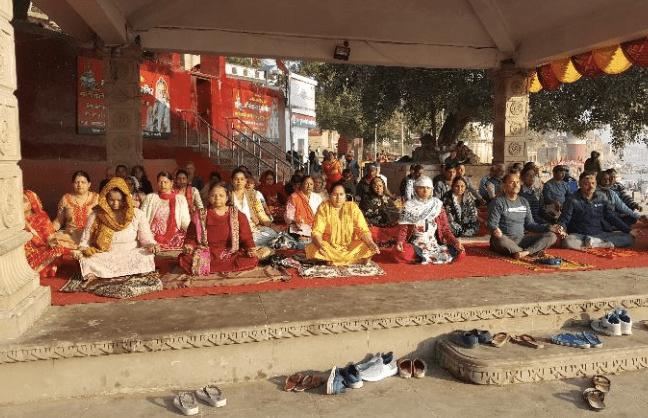
- In India, yoga is often practiced in groups outdoors. It is tempting to join a group and learn to focus on your breathing and movement.
- Seeing dead bodies carried by the relatives of the deceased to the river Ganga to be burned daily makes you feel more alive and present. It shifts your focus from the impermanent (such as things to buy or conflicts with peers) to the more permanent (such as love, care, and joy).

- On average, Indian people are less addicted to technology than people in the U.S., as higher poverty levels make phones prohibitively expensive for many families. Spending less time on the phone means more time being in the moment, paying attention to the current situation, and communicating face-to-face with the people around them.
- Students are asked to critically analyze the provided situations and outline at least three main themes that appear to facilitate mindfulness.
The following main themes could be proposed:
- Cultural traditions that require you to obey specific rituals (e.g., taking off shoes, walking barefoot, kneeling in respect, stepping around a Rangoli) make one pay attention so that they do not miss an appropriate moment for a required action.
- Caring for others (e.g., the elderly, the poor, animals) requires awareness of their needs.
- Limited resources not only inspire creativity, but also a higher level of awareness to maximize opportunities.
- Fewer expectations and societal pressures (e.g., being on time) reduce stress. While under stress, people tend to “live inside their heads” and not attend to the moment. By contrast, reduced stress allows space for heightened awareness and presence. Interestingly, in the U.S., people religiously follow rules and then feel entitled to the rules they follow, so they become angry when others do not follow the rules. By contrast, in India, there is generally less tendency to follow rules, fewer expectations about others following rules, less anger and stress about rule violations, and more acceptance. As a result, people are more compassionate, kind, and forgiving.
- The unpredictability of the environment (e.g., no traffic rules, dirt/poop in unexpected places, dangerous obstacles in your path) reduces opportunities for mindless “autopilot” in people’s lives. An “autopilot” is only possible when the environment is very predictable, and everybody follows the rules.
- Manual labor requires more attention to the task at hand.
- Better connectedness with food and things we consume (e.g., using hands while eating, buying things from people who created them).
- Students are asked to reconsider and update their own list of situations that they think may facilitate mindfulness in the U.S.
- Students are asked to compare situations that may facilitate mindfulness in India and the U.S., and outline at least five similarities and five differences.
- Students are asked to voice their opinions on whether one culture (India or the U.S.) is more supportive of mindfulness.
- Finally, students are asked to think of at least five actionable ways to change their everyday lives to bring more mindfulness.

